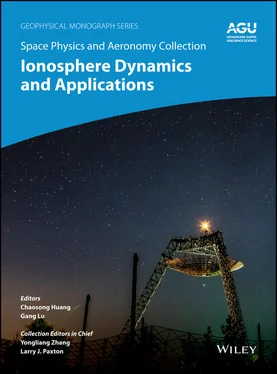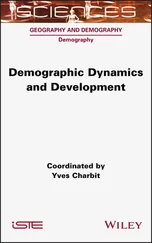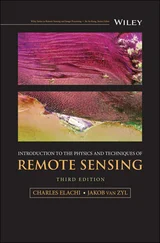On the other hand, when the electron gas is significantly heated, 630 nm emission can also be excited through thermal emission (Schunk & Nagy, 2018). This occurs when there are sufficient electrons with energy higher than 1.96 eV and they can excite the atomic oxygen ground state O( 3P) to excited O( 1D) state. When the excited O( 1D) relaxes back to the ground state, a photon at 630 nm is emitted, such as seen in the stable aurora red (SAR arc) arc case (Kozyra et al., 1990). Kwagala et al. (2018) studied the occurrence rate of thermally excited 630 nm emission in the polar ionosphere and found that the emission has average intensity of 1–5 KR, higher than the typical recombination induced redline emission, and occurs more often when the electron temperature is higher than 3000 K. However, in high‐density regions ( >5 x 10 11m ‐3), the electron temperature needs to be only ~2300 K to have a sufficient number of energetic electrons. This study suggests that in the case of particle precipitation, besides direct impact excitation, the luminosity increase in patches may also be partially attributed to thermal excitation. Because the classical patches have colder electron temperature than the surrounding region, the thermal emission may not be important, while this type of emission would be more significant in the hot patch case. Results from the above studies emphasize that variations in the patch emission could be attributed to multiple factors, and one needs to be very careful when interpreting those variations.
As shown in equations (4.1)and (4.2), the decay of patch and its emission rate not only depends on the electron density distribution, but also on the neutral atmosphere properties. However, many of the above studies have used the empirical MSIS model for the neutral atmosphere, and it has not been quantitatively evaluated before to what extent the neutral atmosphere properties can affect the patch emission and under what conditions. Future studies are required to understand the ion‐neutral coupling processes inside patch using fully coupled ionosphere‐thermosphere models.
4.7 SUMMARY AND CONCLUSIONS
This chapter aims to briefly review the most recent advances in the area of polar cap ionosphere density structures, in particular polar cap patches, and call for future work needed in this area. Reviews by Carlson (1994, 2012) and Crowley (1996) (and references therein) provide synthesized summaries for many earlier works. Since 2012, further advances in this area are enabled by new capabilities, such as much better GPS TEC coverage from ground‐ and space‐based instruments and ISRs deep in the polar cap.
Significant progress has been made in quantifying the occurrence rate of polar cap patches and the new results challenged earlier results by showing that patches occur more often in December in both hemispheres than in each hemisphere's winter. An improved definition of polar cap patch should be created, which not only considers the density enhancements in the immediate adjacent region but also reflects the fact that patches should be of higher densities than the larger‐scale background. Statistical results based on TEC data confirmed the UT and seasonal dependence of patch occurrence predicted by model. However, the occurrence rate of TOI/patch shows no clear relationship with the geomagnetic activity level indicated by Kp. More detailed analysis is needed in the future to take into consideration the storm phases and thermosphere composition changes. In addition, further statistical studies are needed to understand the most probable IMF conditions right at the time when the patches are produced, in order to single out the major segmenting mechanism of patch.
The RISRs in the polar cap have revealed 3‐D patch density structures, their internal plasma dynamics, and the altitude profiles of plasma characteristics within patches. Statistically, the patch electron temperature is lower than that of the surrounding region, and the plasma flow and flux are downward inside the patch. However, “hot” patches with higher electron temperature have also been observed and further studies are needed to distinguish the classical cold and hot patches, in particular, whether they are generated due to different mechanisms or produced by similar mechanisms but evolve under different precipitating particle and field‐aligned current environments. In the future, it may be more sensible to treat the relatively lower‐density patches and higher‐density patches separately, since they might be produced by different mechanisms, and the similarities and differences of their evolution, as well as their relationship with the hot and cold patches, are of great interest.
In the polar cap region, the dynamic evolution of the high‐density structures is mainly controlled by the convection pattern and their fate after they enter the polar cap would be determined by a sequence of convection patterns controlled mainly by the IMF. The patches exit the polar cap nearly symmetrically around midnight, but indeed show clear preference for dusk or dawn sectors under positive or negative IMF B y. Besides the horizontal transport, significantly enhanced type‐1 and type‐2 ion upflow fluxes associated with these high‐density structures have also been observed. The impact of large but intermittent ion upflow/outflow fluxes associated with polar cap patches and TOI on magnetospheric dynamics is of great interest and would require close collaboration between the aeronomy and magnetospheric physics communities.
Enhanced 630 nm airglow emissions due to recombination are often used to image the polar cap high‐density structures. However, besides the recombination‐induced 630 nm emission, other mechanisms can also lead to variations in 630 nm emission, such as soft electron precipitation, thermal excitation, and lifting or descending of the F‐region height. Therefore, care is needed when interpreting the 630 nm emission variations, and it is better to be combined with other diagnosis tools, such as electron temperature. The relative contributions of those mechanisms to the total patch emission under various conditions and for different types of patch should be further explored.
S. Zou would like to acknowledge NASA grant NNX14AF31G, NSF grant AGS 1400998 and NASA grant 80NSSC20K1313. G. W. Perry acknowledges the support from the Natural Science and Engineering Research Council of Canada (NSERC) Discovery Grant RGPIN/06069‐2014.
1 Aa, E., Liu, S., Huang, W., Shi, L., Gong, J., Chen, Y., et al. (2016). Regional 3‐D ionospheric electron density specification on the basis of data assimilation of ground‐based GNSS and radio occultation data: Regional 3‐D ionosphere specification. Space Weather, 14(6), 433–448. doi:10.1002/2016SW001363
2 Aa, E., Ridley, A., Huang, W., Zou, S., Liu, S., Coster, A. J., & Zhang, S. (2018). An ionosphere specification technique based on data ingestion algorithm and empirical orthogonal function analysis method: Madrigal TEC ingestion into NeQuick and EOF analysis. Space Weather. doi:10.1029/2018SW001987
3 Anderson, D. N., Buchau, J., & Heelis, R. A. (1988). Origin of density enhancements in the winter polar cap ionosphere. Radio Science, 23(4), 513–519. doi:10.1029/RS023i004p00513
4 Bust, G. S., & Datta‐Barua, S. (2014). Scientific investigations using IDA4D and EMPIRE. In J. Huba, R. Schunk, & G. Khazanov (Eds.), Modeling the ionosphere‐thermosphere system (pp. 283–297). Geophysical Monograph Series. Chichester, UK: John Wiley & Sons, Ltd. doi:10.1002/9781118704417.ch23
5 Bust, G. S., & Mitchell, C. N. (2008). History, current state, and future directions of ionospheric imaging. Reviews of Geophysics, 46(1). doi:10.1029/2006RG000212
Читать дальше












